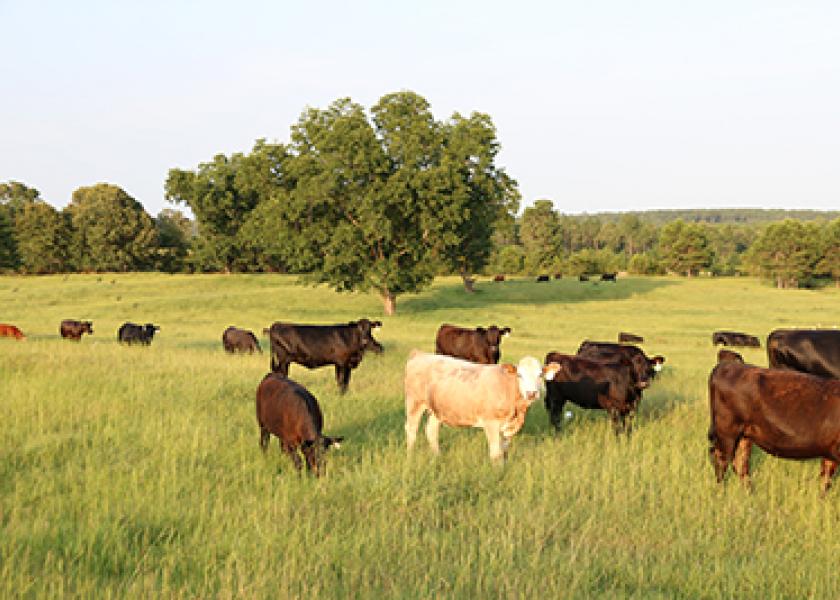Growth Promoting Technologies for Beef Production

With the increased costs of beef production (especially feed and fertilizer) technologies that improve the efficiency of production are increasingly valuable. For example, if the total cost of producing an acre of cool-season annual pasture increased from $83/acre in 2001 to $170/acre, a 10% increase in average daily gain by stocker calves reduces cost of gain by 3-times more now than it did in 2001. Growth promoting technologies, such as implants and ionophores, are a very cost effective way to achieve these higher rates of performance of growing cattle.
In one study, steers were placed on wheat either after receiving an implant or were not implanted. Also, cattle in separate pastures were offered a non-medicated mineral, a mineral medicated with Rumensin, or pressed protein blocks medicated with Rumensin. Steers fed the non-medicated mineral that did not receive an implant gained over 2.3 pounds per day, which is excellent performance for grazing steers. But the implanted steers fed the non medicated mineral gained 2.7 pounds per day, an increase of 0.4 lbs per day! While implanted steers fed the medicated mineral or medicated pressed blocks gained 0.55 pounds more per day than control steers (fed the non-medicated mineral and did not receive an implant). Over a 100-day grazing period supplying an ionophore along with a growth promoting implant increased bodyweight gains by 55 pounds, a 23% increase in performance.
In another study steers received for a stocker program were not implanted, implanted upon arrival to the receiving pens, or implanted following 14 or 28 day delays. Implanting during the receiving period did not affect animal performance or animal health during the receiving period, but implanting during receiving did increase gains while steers were on pasture. Implanting increased overall average daily gain by 0.3 pounds per day, but during the last 28-days of grazing steers implanted on arrival gained less than steers implanted either on day 14 or 28 of receiving.
During receiving energy is likely being used by steers to combat stress and enhance immune function, as opposed to increasing performance in response to implants. While grazing steers responded to implants with increasing weight gain, but early implants were playing out before the end of the grazing season.
Recent research examined the effects of implants of growing calves on subsequent carcass quality and consumer acceptability of beef. Steers and heifers were implanted (or not implanted) prior to finishing as calves (shipped to feedlot at 10 months of age) or as yearlings (shipped to feedlot at 15 months of age) after a stocker period with restricted gains (<1 pound of gain per day) or unrestricted gains (> 2 pounds of gain per day). Implants increased pre-finishing gains of all cattle whether they were calf-fed, restricted gain yearlings, or unrestricted gain yearlings. Interestingly performance during finishing was not affected by implants pre-finishing.
Carcass quality and tenderness was not affected by implant pre-finishing in calf-fed or unrestricted yearlings, but carcass quality grade was decreased and toughness was increased with implanting when growth was restricted during the stocker period.
Growth promoting technologies (implants and ionophores) are valuable tools for stocker producers with the potential to increase returns by $30 to 50 per calf. With judicious use of these technologies there is no detrimental effect on subsequent feedlot performance, carcass quality, or consumer satisfaction of beef.







